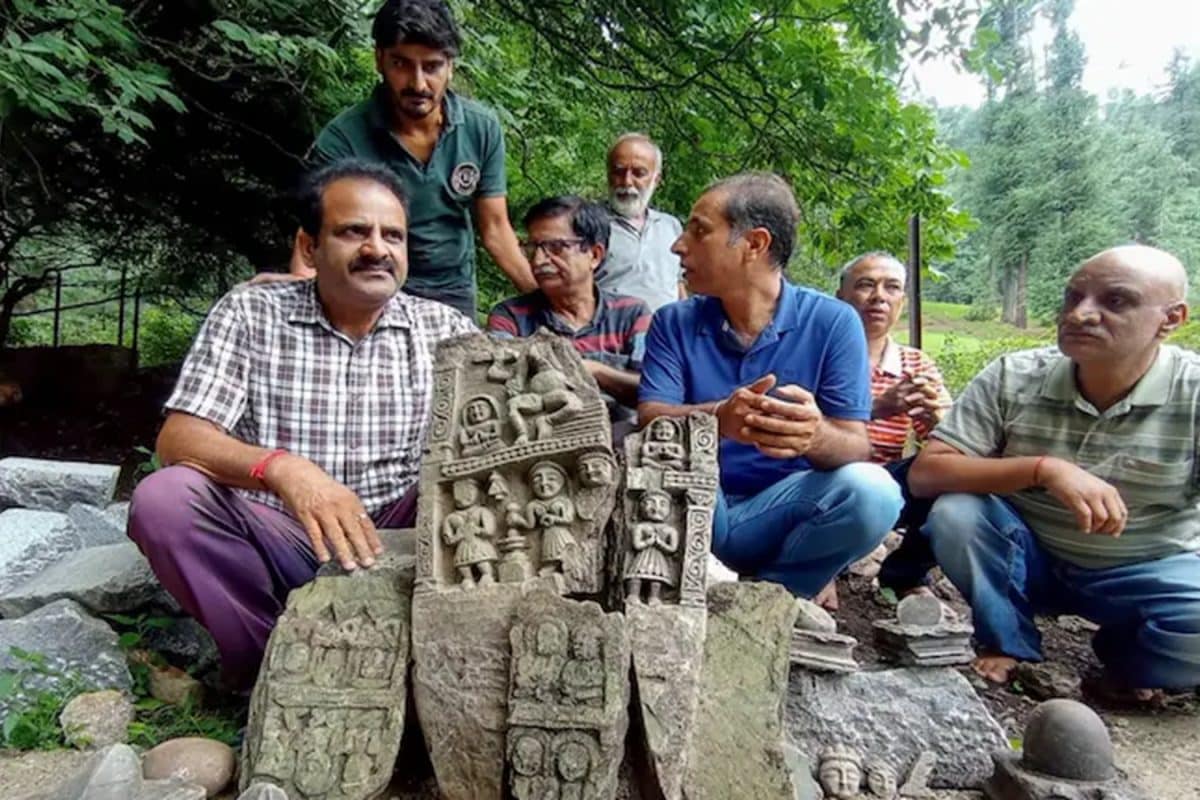

During excavation work in the Anantnag district of Jammu and Kashmir, ancient Hindu idols, including several Shivlings, have been discovered. The artifacts were unearthed during renovation work on a spring at Karkoot Nag in the Salia area of Aishmuqam, approximately 16 km from the district headquarters. The Public Works Department (PWD) was carrying out the restoration project when local laborers found the relics while digging.
The discovery includes multiple stone idols, some bearing engravings of Hindu deities. Following the discovery, officials from the Jammu and Kashmir Department of Archives, Archaeology, and Museums visited the site. The recovered items are being transferred to the SPS Museum in Srinagar for material analysis and carbon dating to determine their age and historical context. Experts from the Department of Archives, Archeology and Museums stated that these stones depicting various Hindu deities need study and research to confirm its exact age and origins.
The site holds deep significance for the Kashmiri Pandit community, many of whom associate it with the ancient Karkoota dynasty that ruled Kashmir between 625 and 855 CE. A local Pandit suggested that the presence of such idols indicates that a temple may have once existed at the site or that the artifacts might have been preserved there intentionally. The pond where the idols were discovered has long been regarded as a sacred pilgrimage center. The Karkut Nag Kund holds deep religious significance for Hindus, especially Kashmiri Pandits, who believe it is connected to the serpent deity Naga Karkut, revered in ancient Kashmiri traditions. The Karkut Nag is also a dual manifestation of Lord Shiva and Vishnu, who are worshipped there for centuries.
The discovery has prompted calls from the local community to safeguard the site and rebuild a temple. A local Kashmiri Pandit stated, "We believe there was once a temple here. Now that sacred items have been recovered, we urge the government to construct a new temple and reinstall the Shivlings". Members of the Papharan Nag Karkut Nag Trust were present and said that Karkut Nag was an ancient pilgrimage centre for Hindus who visited the shrine for mediation and worship.
The unearthing of these artifacts not only revives interest in the region's rich heritage but could also shed new light on religious and dynastic histories in Kashmir. The department has not confirmed whether the site will be developed for religious or heritage tourism, but conservation efforts are likely to follow once the study is complete.